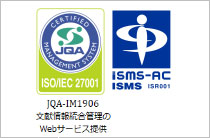ホームIMICライブラリMMWR抄訳2016年(Vol.65)HIV医療を受けるヒスパニック系/ラテン系人におけ・・・
2016/10/14Vol. 65 / No. 40
MMWR65(40):1104-1107
Unmet Needs for Ancillary Services Among Hispanics/Latinos Receiving HIV Medical Care — United States, 2013–2014
HIV医療を受けるヒスパニック系/ラテン系人における補助的サービスの潜在ニーズ ― アメリカ、2013年~2014年
ヒスパニック系/ラテン系人におけるHIV感染症の発症率は白人の約2倍高い。HIV患者では治療を継続するため、日々の生活を支援する補助的サービスが必要であり、今回、CDCは2013~2014年のMedical Monitoring Project (MMP)データより、これらのサービスに関する潜在ニーズの状況とその理由について分析を行った。ヒスパニック/ラテン系人のHIV外来患者における非HIV医療的サービスとして、歯科ケア、眼科および視力ケアおよびメンタルヘルスケアの潜在ニーズはそれぞれ24%、21%、6%、生活的サービスとして、食事および栄養ケア、移動補助、シェルターまたは住宅提供の潜在ニーズはそれぞれ15%、9%、8%、HIVサポートサービスとしてHIVピアグループ支援の潜在ニーズは7%であった。18~29歳および30~39歳では50歳以上の症例に比べシェルターまたは住宅サービス、HIVピアグループ支援の潜在ニーズが高く、30~39歳では歯科ケアのニーズも高かった。また、男性の中では同性愛者(MSM)に比べ異性愛者にて移動支援サービスおよびメンタルヘルスケアのニーズが高かった。補助的サービスの認知に関しては、移動支援、食事および栄養サービスおよびHIVピアグループ支援の潜在ニーズ例にて40%以上の人がサービスを受けられることを認識しておらず(それぞれ44%、42%、43%)、シェルターまたは住宅サービス、メンタルヘルスケア、眼科および視力ケアの潜在ニーズ例ではそれぞれ25%、25%、22%と約1/4の症例がサービスを認識していなかった。シェルターまたは住宅サービス、移動支援、食事および栄養ケアの潜在ニーズ例のそれぞれ28%、21%、15%はサービスを認識していたが自分には資格が無いと思っており、また、デンタルケア、眼科および視力ケアの潜在ニーズ例の16%、14%は金銭的または医療保険の問題からサービスを受けていなかった。これらの結果より、今後、HIV患者に対し、これらの補助的サービスが受けられることの認識を広め、HIVに関連する健康的格差を是正することが重要と考える。
References
- CDC. Diagnoses of HIV infection in the United States and dependent areas, 2014. HIV Surveillance Report, vol. 26. Atlanta, GA: US Department of Health and Human Services, CDC; 2015. <https://www.cdc.gov/hiv/pdf/library/reports/surveillance/cdc-hiv-surveillance-report-us.pdf>
- Conviser R, Pounds MB. The role of ancillary services in client-centred systems of care. AIDS Care 2002;14(Suppl 1):S119–31. <http://dx.doi.org/10.1080/ 09540120220150018>
- CDC. Behavioral and clinical characteristics of persons receiving medical care for HIV infection—Medical Monitoring Project, United States, 2013 Cycle (June 2013–May 2014). 2016. HIV Surveillance Report no. 16. <http://www.cdc.gov/hiv/pdf/library/reports/surveillance/cdc-hiv-hssr-mmp-2013.pdf>
- Beer L, Mattson CL, Bradley H, Skarbinski J; Medical Monitoring Project. Understanding cross-sectional racial, ethnic, and gender disparities in antiretroviral use and viral suppression among HIV patients in the United States. Medicine (Baltimore) 2016;95:e3171. <http://dx.doi. org/10.1097/MD.0000000000003171>
- Dennis AM, Napravnik S, Seña AC, Eron JJ. Late entry to HIV care among Latinos compared with non-Latinos in a southeastern US cohort. Clin Infect Dis 2011;53:480–7. <http://dx.doi.org/10.1093/cid/cir434>
- The White House Office of National AIDS Policy. National HIV/AIDS Strategy for the United States: Updated to 2020. Washington, DC: White House Office of National AIDS Policy; 2015. <https://www.aids.gov/federal-resources/national-hiv-aids-strategy/nhas-update.pdf>
- Myers TR, Lin X, Skarbinski J. Antiretroviral therapy and viral suppression among foreign-born HIV-infected persons receiving medical care in the United States: a complex sample, cross-sectional survey. Medicine (Baltimore) 2016;95:e3051. <http://dx.doi.org/10.1097/MD.0000000000003051>
- Shedlin MG, Shulman L. Qualitative needs assessment of HIV services among Dominican, Mexican and Central American immigrant populations living in the New York City area. AIDS Care 2004;16:434–45. <http://dx.doi.org/10.1080/09540120410001683376>
- Health Resources and Services Administration. Ryan White HIV/AIDS program annual client-level data report 2014. Rockville, MD: US Department of Health and Human Services, Health Resources and Services Administration; 2015. <http://hab.hrsa.gov/data/servicesdelivered/2014RWHAPDataReport.pdf>B
- Beane SN, Culyba RJ, DeMayo M, Armstrong W. Exploring the medical home in Ryan White HIV care settings: a pilot study. J Assoc Nurses AIDS Care 2014;25:191–202. <http://dx.doi.org/10.1016/j.jana.2013.10.007>
Copyright © 2013 International Medical Information Center. All Rights Reserved.












